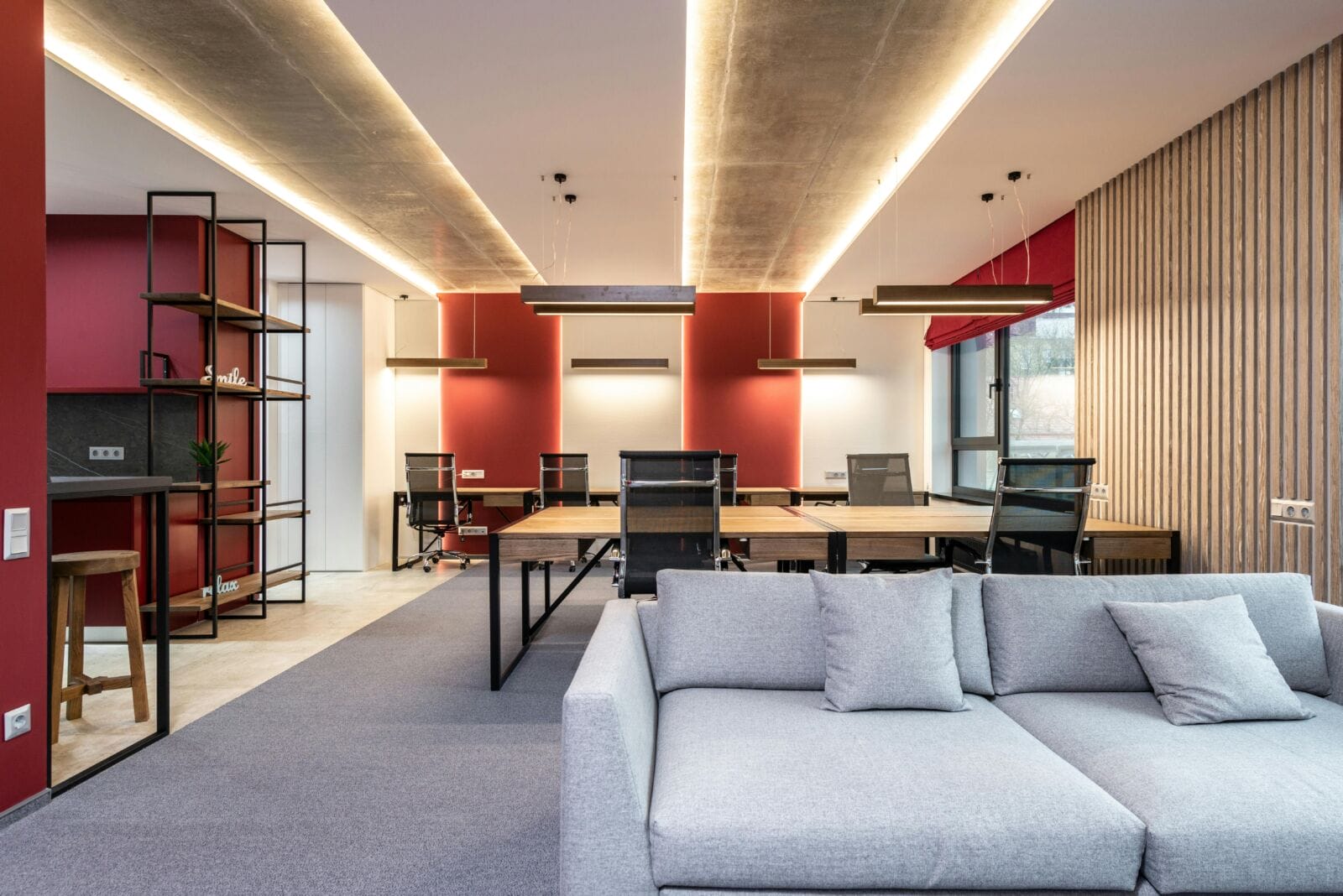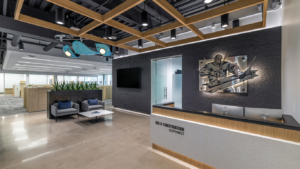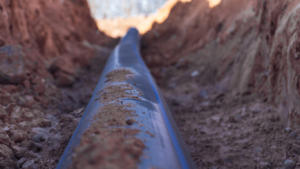In a world where technology and work practices are constantly evolving, we asked co-founders and CEOs to share their insights on creating an adaptable office design. From investing in flexible modular furniture to creating spaces for collaboration, explore the top twelve strategies these experts recommend for future-proofing your office environment. Here’s how to future-proof your office design for evolving needs:
LEARN MORE: Report shows strong year-over-year gains in Arizona technology jobs
- Invest in Flexible Modular Furniture
- Negotiate Flexible Lease Agreements
- Designate Flex-Time Zones
- Embrace Continuous Improvement Culture
- Assemble Cross-Functional Design Teams
- Incorporate Biophilic Design Elements
- Integrate Seamless Technology Upgrades
- Include Wellness Rooms
- Stay Current with Tech Trends
- Prioritize Inclusivity in Design
- Ensure Robust Wireless Infrastructure
- Create Spaces for Collaboration
Invest in Flexible Modular Furniture
Office design today is all about flexibility and adaptability. One simple tip for future-proofing your office design is to use flexible and modular furniture. This means investing in furniture that can be easily rearranged or reconfigured to suit changing work practices and technology needs.
For example, desks with adjustable heights allow employees to switch between sitting and standing, promoting a healthier work environment. Modular furniture can also be easily moved and repurposed to create collaborative or private spaces as needed.
By investing in flexible furniture, you can ensure that your office design remains adaptable to the ever-changing needs of your employees and business.
Alex Capozzolo, Co-Founder, SD House Guys
Negotiate Flexible Lease Agreements
We negotiate flexible lease agreements for our office space. This gives us the option to scale up or down as needed without being tied to a long-term commitment. This adaptability in our office location ensures that we can align our physical workspace with evolving work practices and organizational needs.
Mark Varnas, Principal SQL Server DBA and Consultant, Red9
Designate Flex-Time Zones
We designate flex-time zones where employees can choose their preferred work hours. These zones include hot-desking options and are equipped with technology that supports flexible schedules. By providing the infrastructure for flexible work practices, we ensure that our office remains adaptable to employees’ changing needs and schedules.
David Gaglione, Founding Partner, PS212
Embrace Continuous Improvement Culture
One tip for ensuring that your office design remains adaptable to changes in technology and work practices is to embrace a culture of continuous improvement. This means viewing office design as an ongoing process, not a one-time project. Regularly gather feedback from employees, monitor space utilization, and be open to experimenting with new technologies and layouts.
This approach allows the space to keep pace with evolving needs and build a truly adaptable workspace for the future. This could include modular furniture, robust technology infrastructure, and multipurpose spaces. Remember, adaptability is key in today’s dynamic work environment, and the only way to ensure your office design remains adaptable is to build these habits into your organization.
Jianwei Kapp, Marketing Coordinator, Achievable
Assemble Cross-Functional Design Teams
We assemble cross-functional design teams that include representatives from various departments. These teams collaborate on office design decisions, bringing diverse perspectives to the table. By involving employees from different roles, our office design remains adaptable to the specific needs and practices of each department, fostering a sense of ownership and inclusion.
Michael Nemeroff, CEO and Co-Founder, Rush Order Tees
Incorporate Biophilic Design Elements
We incorporate biophilic design elements such as plants, natural materials, and access to outdoor spaces. This not only enhances the aesthetics of our office but also contributes to employee well-being. As work practices increasingly recognize the importance of a connection to nature, our office remains adaptable by providing spaces that foster creativity, reduce stress, and boost overall satisfaction.
Mika Kujapelto, Managing Director, Casino Professor
Integrate Seamless Technology Upgrades
The biggest thing to consider when it comes to future-proofing an office (whether it’s at home or in a designated workplace) is ensuring that these spaces can seamlessly integrate technology. You need to consider factors such as cable management, AV solutions, and smart office systems that can be easily upgraded as technology evolves.
If you have a workspace that cannot take on new technologies, then you need to make some changes. One way to do this is to provide easily accessible power solutions in various locations. Consider pop-up power outlets, charging stations, and power hubs to accommodate the diverse charging needs of different devices.
Also, explore ways to enhance workplace efficiency, such as integrating smart thermostats, occupancy sensors, and other connected devices that contribute to a smart and responsive office environment!
Melissa Ng, Business Development and Operations Manager, AppSalon
Include Wellness Rooms
To accommodate changing work practices and prioritize employee well-being, we include wellness rooms in our office design. These rooms can serve as spaces for meditation, relaxation, or nursing for new parents. By addressing diverse employee needs, we ensure that our workspace remains adaptable to a range of work-life integration practices.
Brooke Webber, Customer Experience Officer (CXO), AllCrystal.com
Stay Current with Tech Trends
A great tip that I’ve been taught is to prioritize keeping up with tech news or trends in the media regarding office technology software to ensure your office remains adaptable to changes in tech or work practices. More specifically, this means staying current with your computer’s software programs, computer viability, and computer accessories such as mice, keyboards, and even printers for employees at all times.
These are essential updates in office design in this technological day and age. If you can keep up with your hardware, especially computers and office essentials, you will always be able to adapt to new technology, and your work practices can be taught seamlessly.
Chris Hunter, Director of Customer Relations, ServiceTitan
Prioritize Inclusivity in Design
When considering future-proofing for the return to work, prioritizing inclusivity is paramount. Many companies recognize the significance of hiring for diversity, equity, and inclusion. It’s essential to extend this commitment to the physical office space. Inclusive designs encompass features such as non-binary restrooms, lactation rooms for mothers, prayer rooms, ergonomic furniture catering to diverse body types, and quiet rooms to facilitate focused work.
Recognizing that your employees are the cornerstone of your brand, ensuring that they feel a sense of belonging is the key to future-proofing your workplace.
Aimie Ye, Director of Content Marketing, Centime
Ensure Robust Wireless Infrastructure
To future-proof our office design, we prioritize the seamless integration of wireless infrastructure. We ensure that the workspace is equipped with robust Wi-Fi coverage, power outlets, and charging stations strategically placed throughout the office. This infrastructure flexibility enables our employees to work wirelessly, accommodating an array of devices and technology trends.
Phil Strazzulla, Founder, SelectSoftware Reviews
Create Spaces for Collaboration
When thinking about future-proofing our office design, the focus was on creating spaces that foster collaboration. This meant setting up open-plan areas, incorporating breakout rooms, and establishing shared workstations. Why? Because collaboration is the heartbeat of innovation, especially in a law firm like ours.
Open-plan layouts, for instance, break down physical barriers. It’s a lot easier for team members to interact, share ideas, and work together seamlessly. On the other hand, breakout rooms add a balance—offering private spaces for focused discussions or solo tasks.
So when in doubt, design for collaboration—it’s the one direction every industry is simultaneously working towards.
Riley Beam, Managing Attorney, Douglas R. Beam, P.A.




